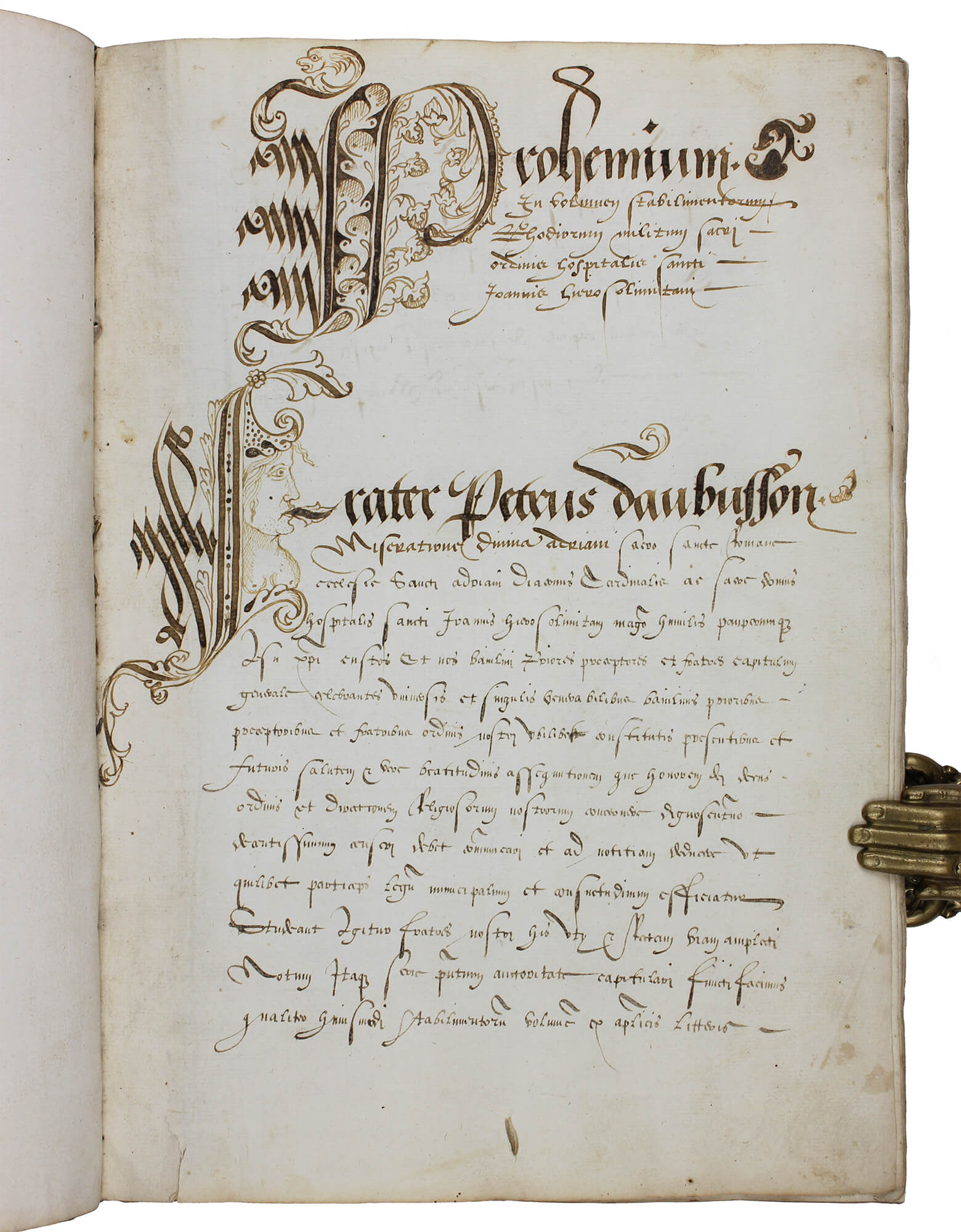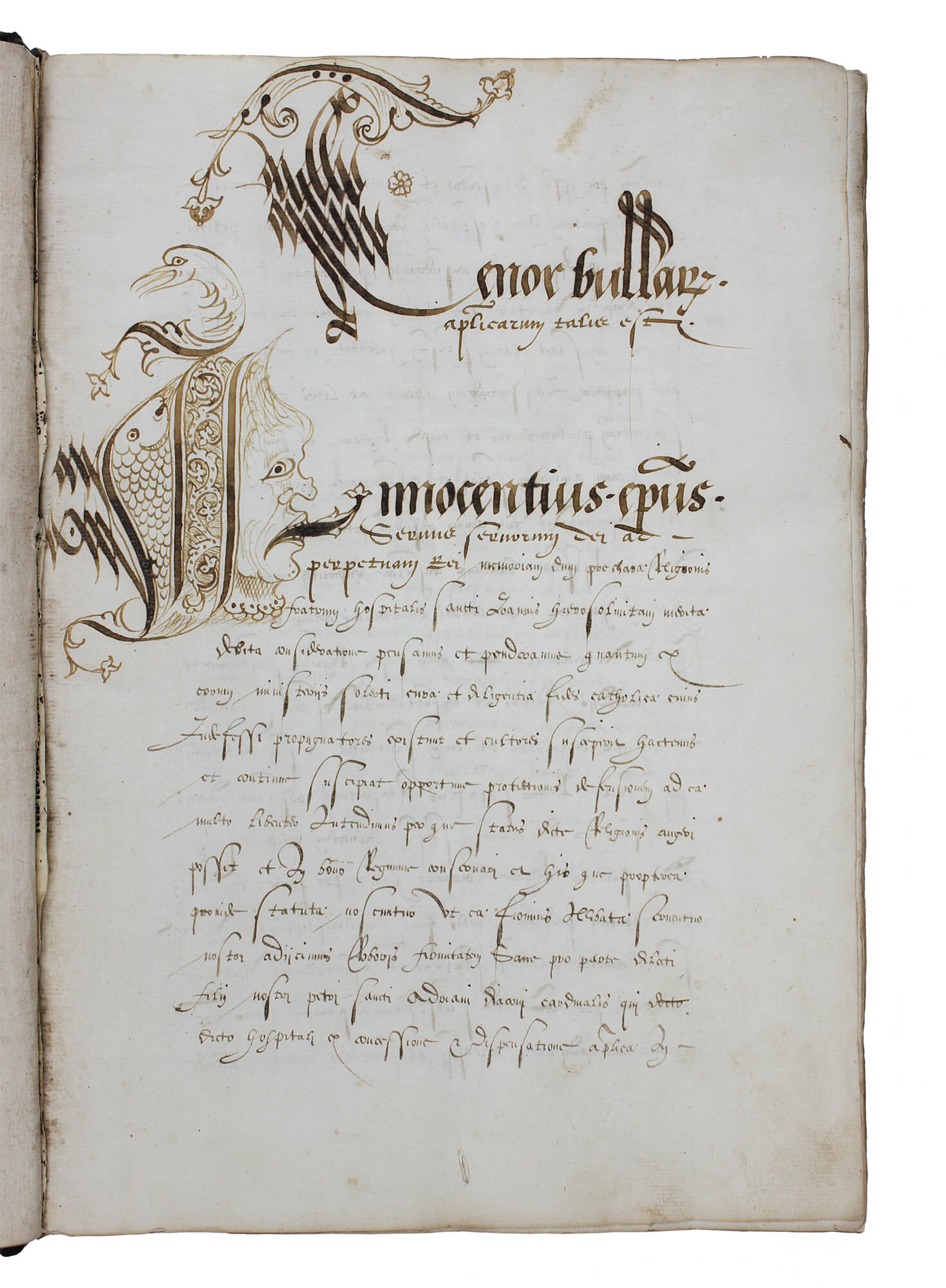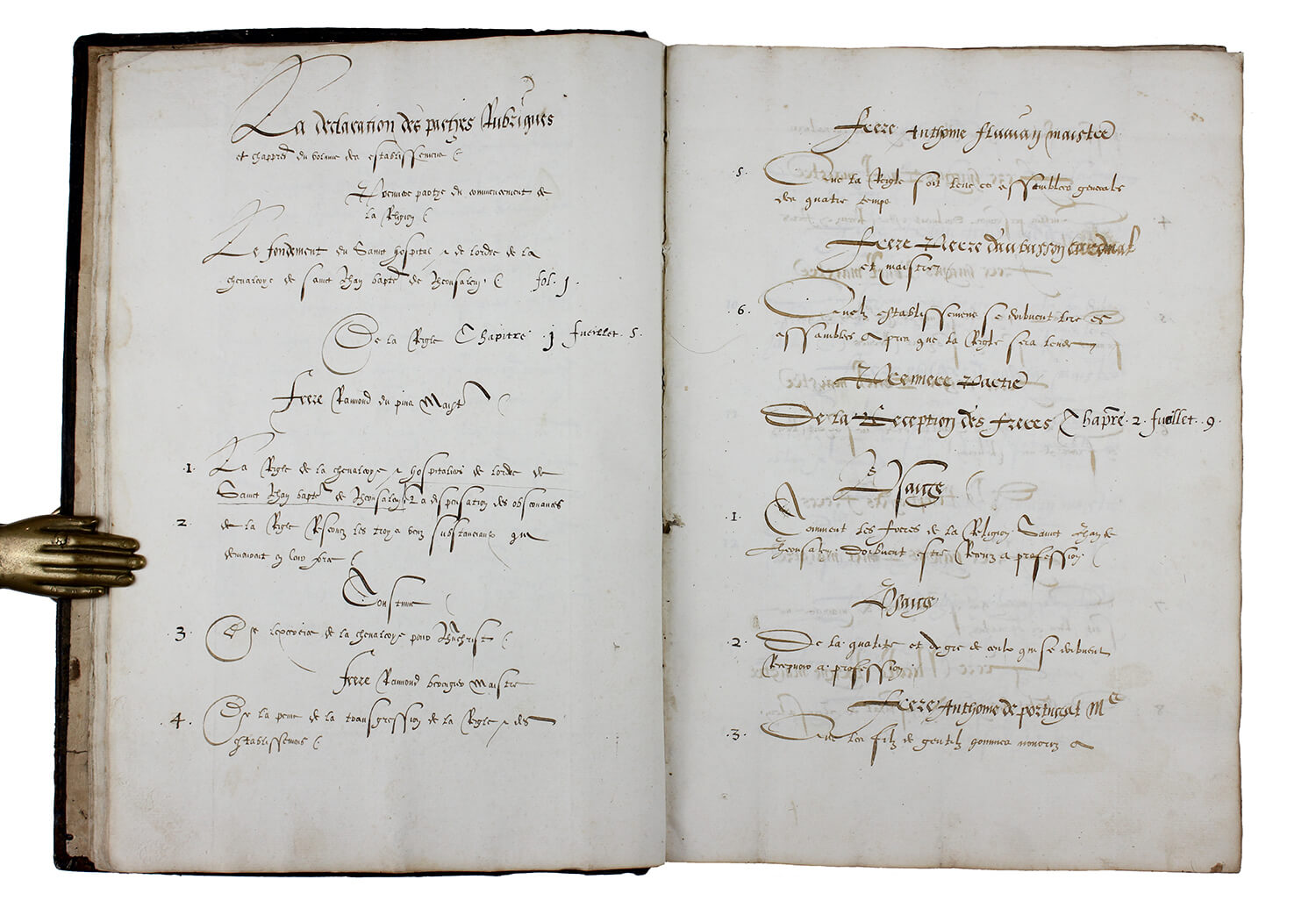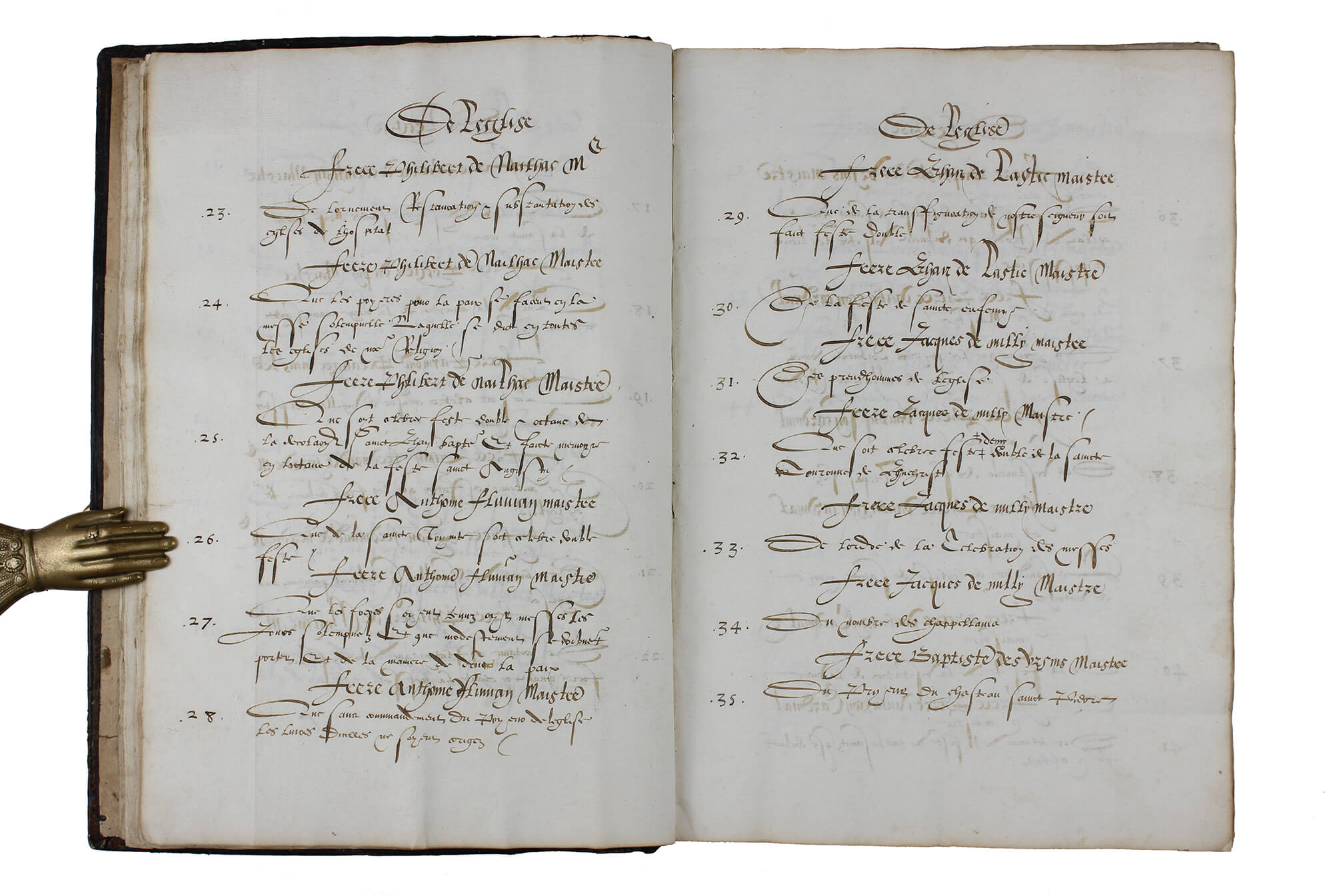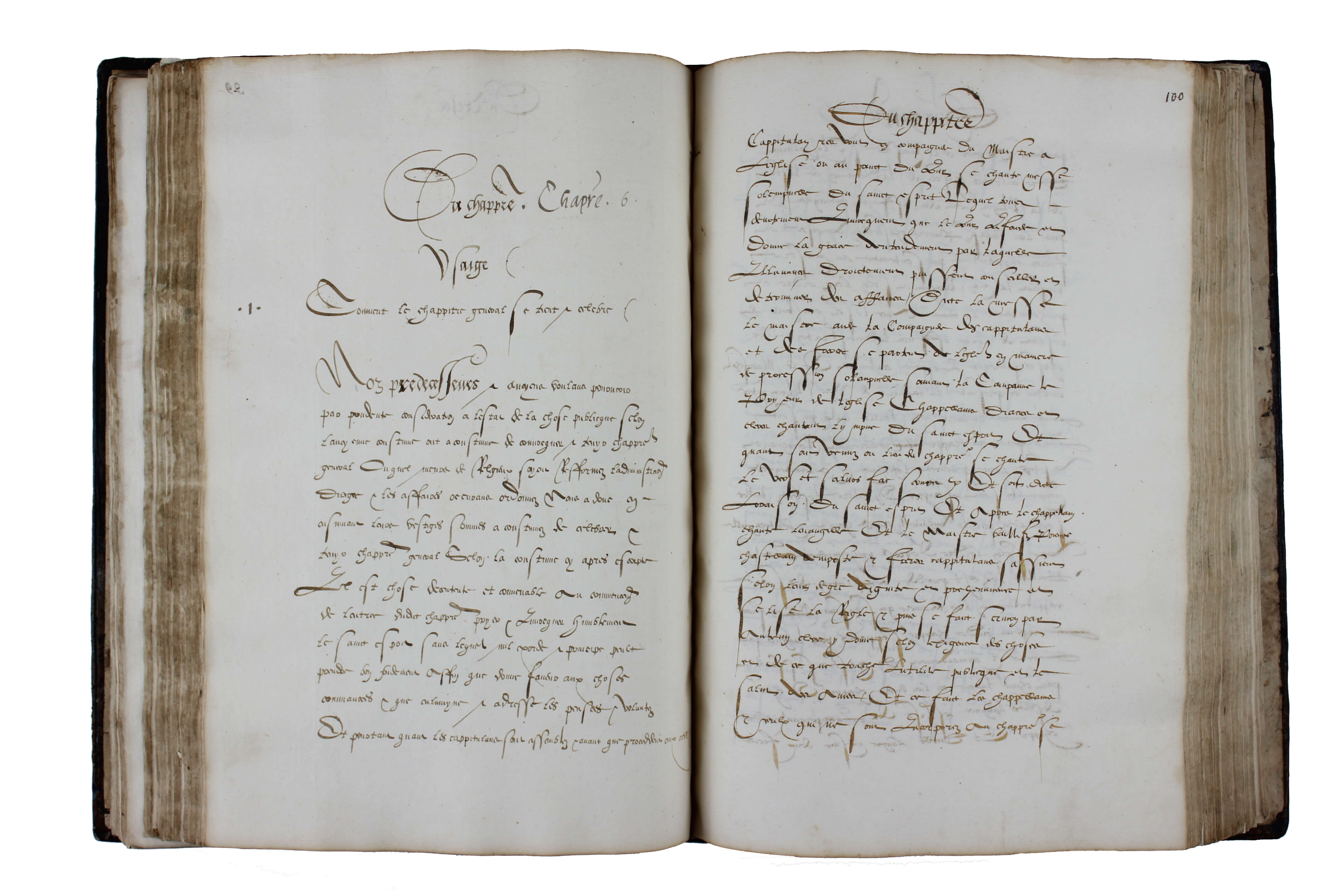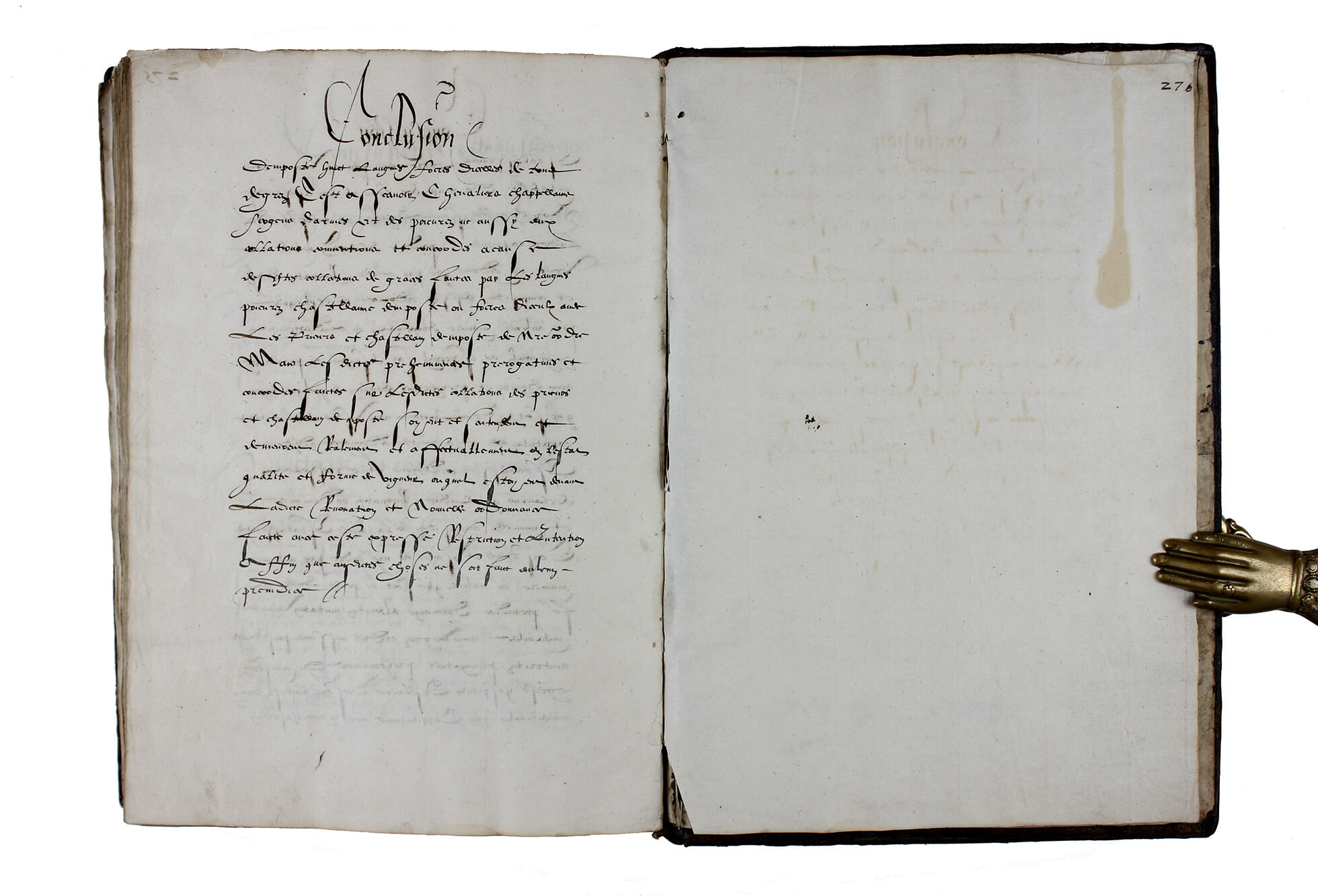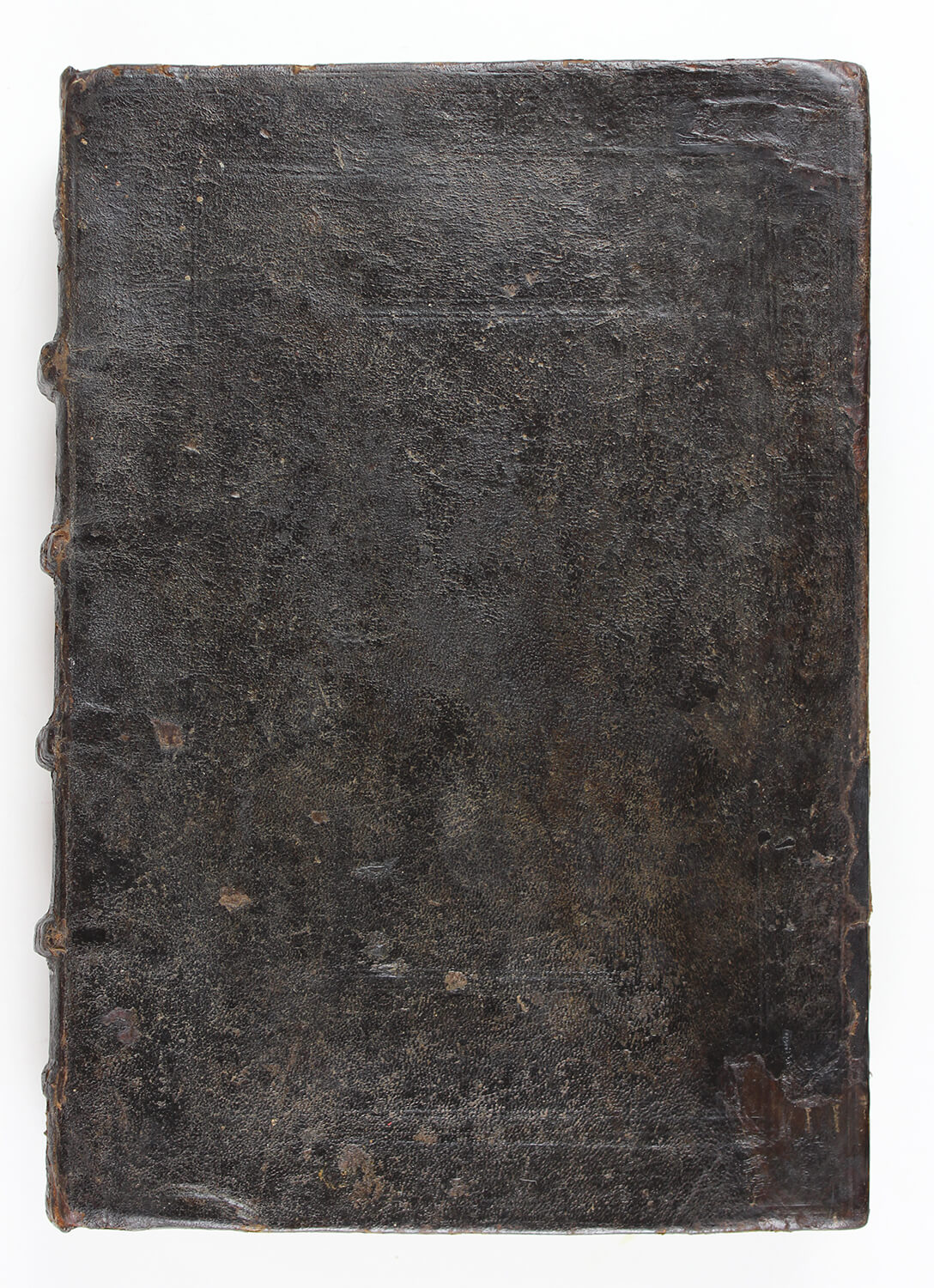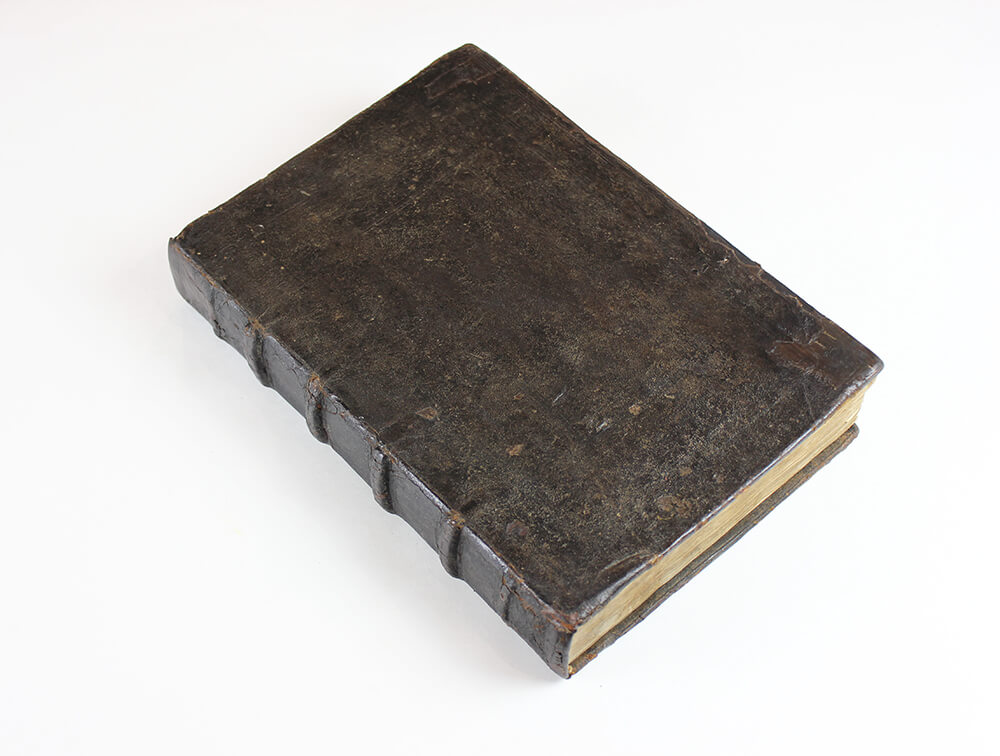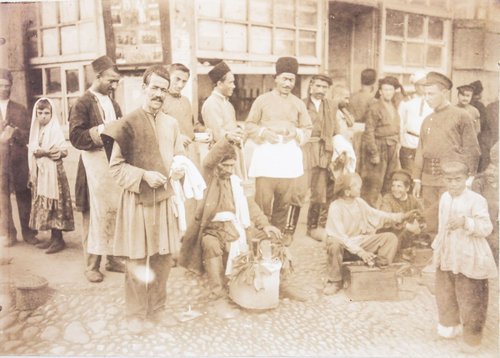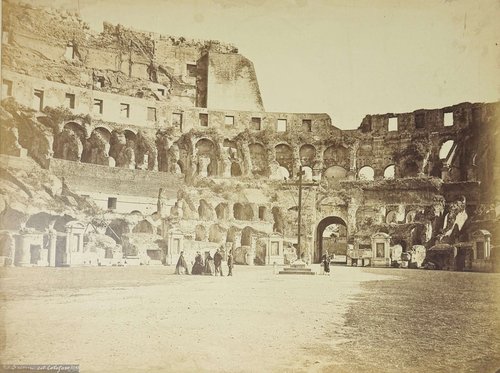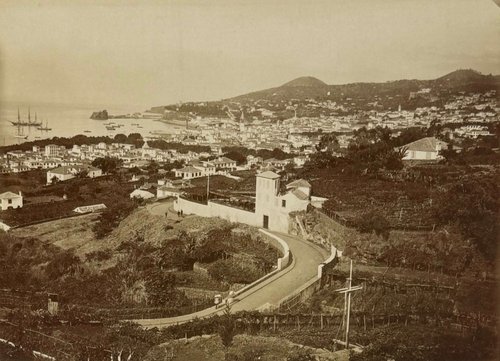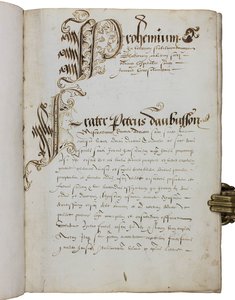
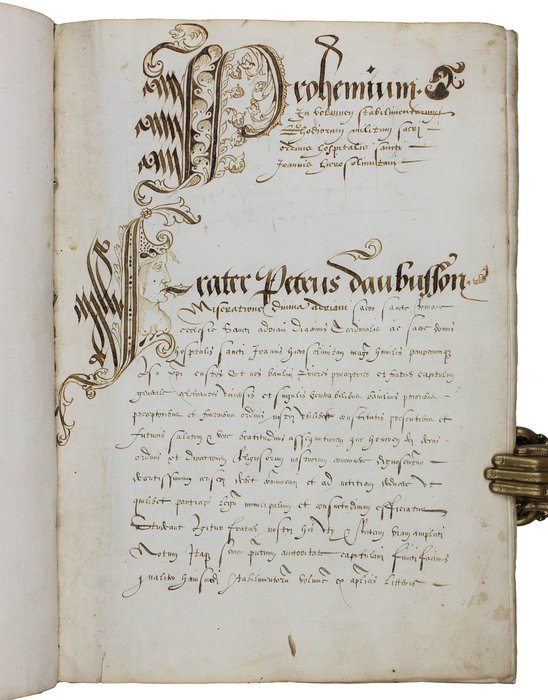
.jpg.700x700_q85_autocrop_replace_alpha-%23FFFFFF.jpg)
.jpg.700x700_q85_autocrop_replace_alpha-%23FFFFFF.jpg)
.jpg.700x700_q85_autocrop_replace_alpha-%23FFFFFF.jpg)
.jpg.700x700_q85_autocrop_replace_alpha-%23FFFFFF.jpg)
.jpg.700x700_q85_autocrop_replace_alpha-%23FFFFFF.jpg)
.jpg.700x700_q85_autocrop_replace_alpha-%23FFFFFF.jpg)
.jpg.700x700_q85_autocrop_replace_alpha-%23FFFFFF.jpg)
.jpg.700x700_q85_autocrop_replace_alpha-%23FFFFFF.jpg)
#12469
Early or Mid-1500s
Manuscript on paper. 325 pp. (including blanks). 2°. 30,2 x 20,3 cm. Period full-cloth binding with traces of blind tooling. Gothic calligraphic cursive, iron gall ink on Spanish paper with filigree dating to the 1520s–1530s (“hand with initials NO under a cinquefoil”, “pilgrim in a circle with the initial IA,” etc.). Eight large initials with exquisite calligraphic and decorative ornaments in the form of florals, beasts, and grotesque human heads. Very good. Professional restoration of the binding, light soiling. In French.
An extremely rare handwritten copy of the rules of the world’s oldest knightly order (Hospitallers, Johannites, or the Order of Malta), created during a pivotal moment in its history, before the order’s relocation to Malta.
The Knights Hospitaller is the world’s oldest chivalric order founded by Blessed Gerard in 1099, immediately after the First Crusade, in honor of John the Baptist. Alongside the Knights Templar (1119–1312), it soon became one of the most powerful Christian organizations in the Kingdom of Jerusalem, reporting directly to the Pope. After the fall of the kingdom in 1187, the Hospitallers retreated to the County of Tripoli, and following the loss of Acre in 1291, they sought refuge in the Kingdom of Cyprus. Determined to establish a sovereign knightly state, they landed in 1309 on the Byzantine island of Rhodes, which they conquered over the next two years. There, they built the renowned fortress of Rhodes and held the island for two centuries. In 1480, they successfully repelled an assault by Sultan Mehmed II, who had hoped to capture Rhodes after taking Constantinople. In 1522, the forces of Suleiman the Magnificent laid siege to the island. Though the defenders were outnumbered more than ten to one, they resisted for six months before ultimately surrendering. The surviving knights were granted safe passage to Sicily. In 1530, the order settled on Malta, securing its hold on the island by withstanding the Great Siege of Malta in 1565. It was only with the arrival of Napoleon Bonaparte in 1798 that the order lost its rule over the island.
This manuscript was likely created during a pivotal period for the order—between its final years on Rhodes and its establishment in Malta—when securing new supporters was of particular importance. The order’s new constitution, or statutes, was compiled in French by its vice-chancellor Guillaume Caoursin (1430–1501) in the early 1490s. By that time, the statutes had become so entangled with amendments and regulations that a thorough revision was necessary. Among the notable innovations was the requirement to wear the eight-pointed cross, which later became known as the Maltese cross. The statutes also included a papal bull issued by Pope Innocent VIII and a preface by the Grand Master Pierre d’Aubusson (1423–1503).
Our manuscript was most likely based on the first printed edition of the statutes, published in Paris between 1493 and 1495 (ISTC ic00115000). However, it also contains later additions introduced by Grand Masters Fabrizio del Carretto (1455–1521) and Philippe de Villiers de L’Isle-Adam (1464–1534). These amendments were only published in an exceptionally rare Latin edition printed in Salamanca in 1534, yet the manuscript presents notable textual variations even in comparison with that edition. It is important to mention that our manuscript is apparently the only known example of a French translation of de L’Isle-Adam’s additions to the statutes. De L’Isle-Adam was the commander who led the defense of the fortress of Rhodes in 1522 and later secured Malta for the order in 1530.
According to the most plausible theory, the manuscript was produced in a Flemish workshop to promote the order’s ideals, attract new supporters, and secure additional resources. Due to the active copying of books and the limited number of paper mills, the Flemish region faced a paper shortage, and local workshops often relied on paper imported from France, Italy, and Spain. The scribe’s handwriting also points to a Flemish origin. An alternative theory suggests that the scribe may have been a French-speaking Fleming—a member of the order—who transcribed the manuscript in Malta, where Catalan merchants were actively engaged in trade.
One of the manuscript’s most striking features is its exquisite calligraphy, adorned with expressive initials. These initials combine elaborate lettering with ornamental designs and grotesque depictions of human heads and beasts.
Overall, historically and culturally significant manuscript created by the world’s oldest knightly order during a pivotal moment in its history, featuring unique content and exquisite initials.

